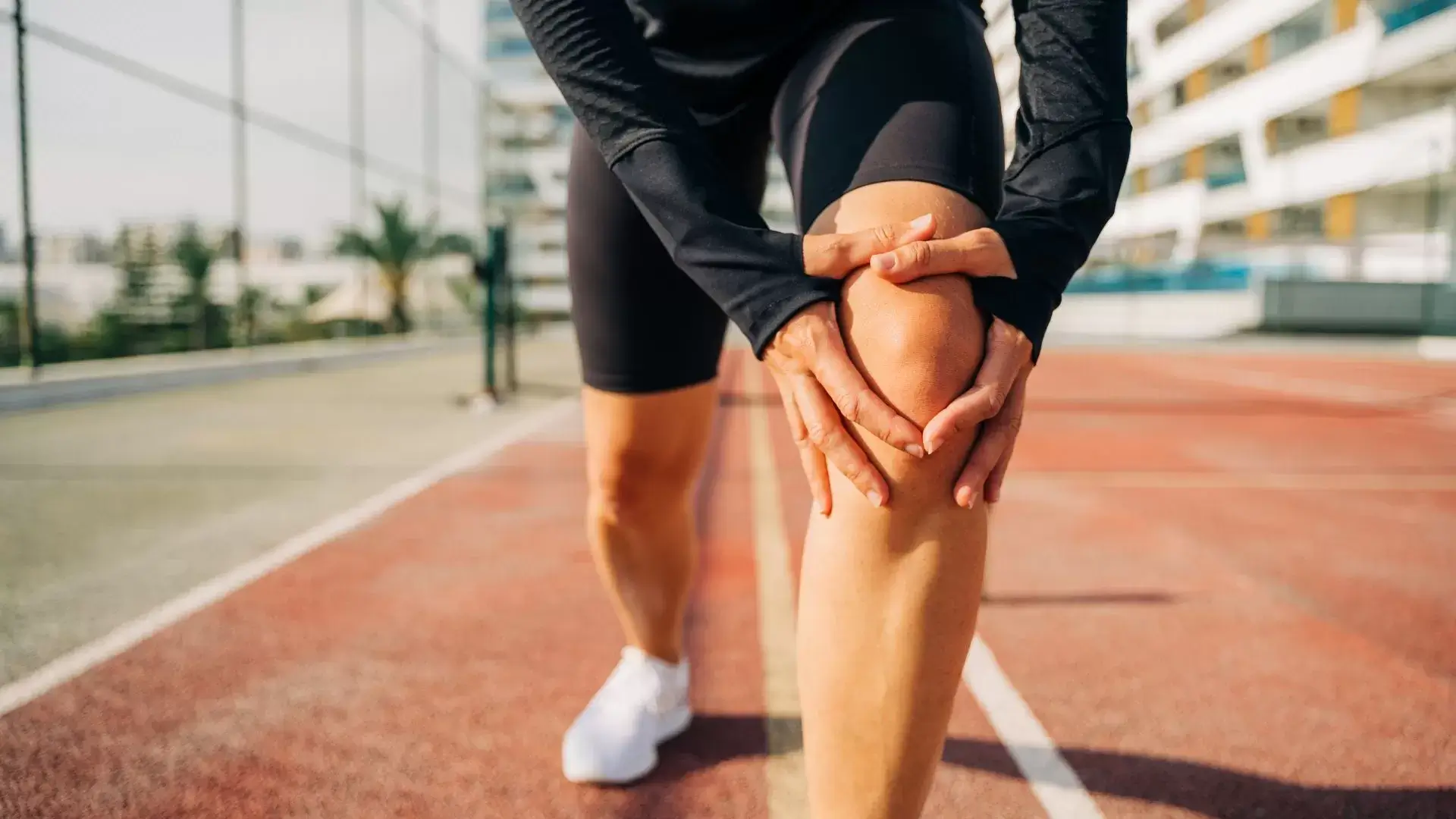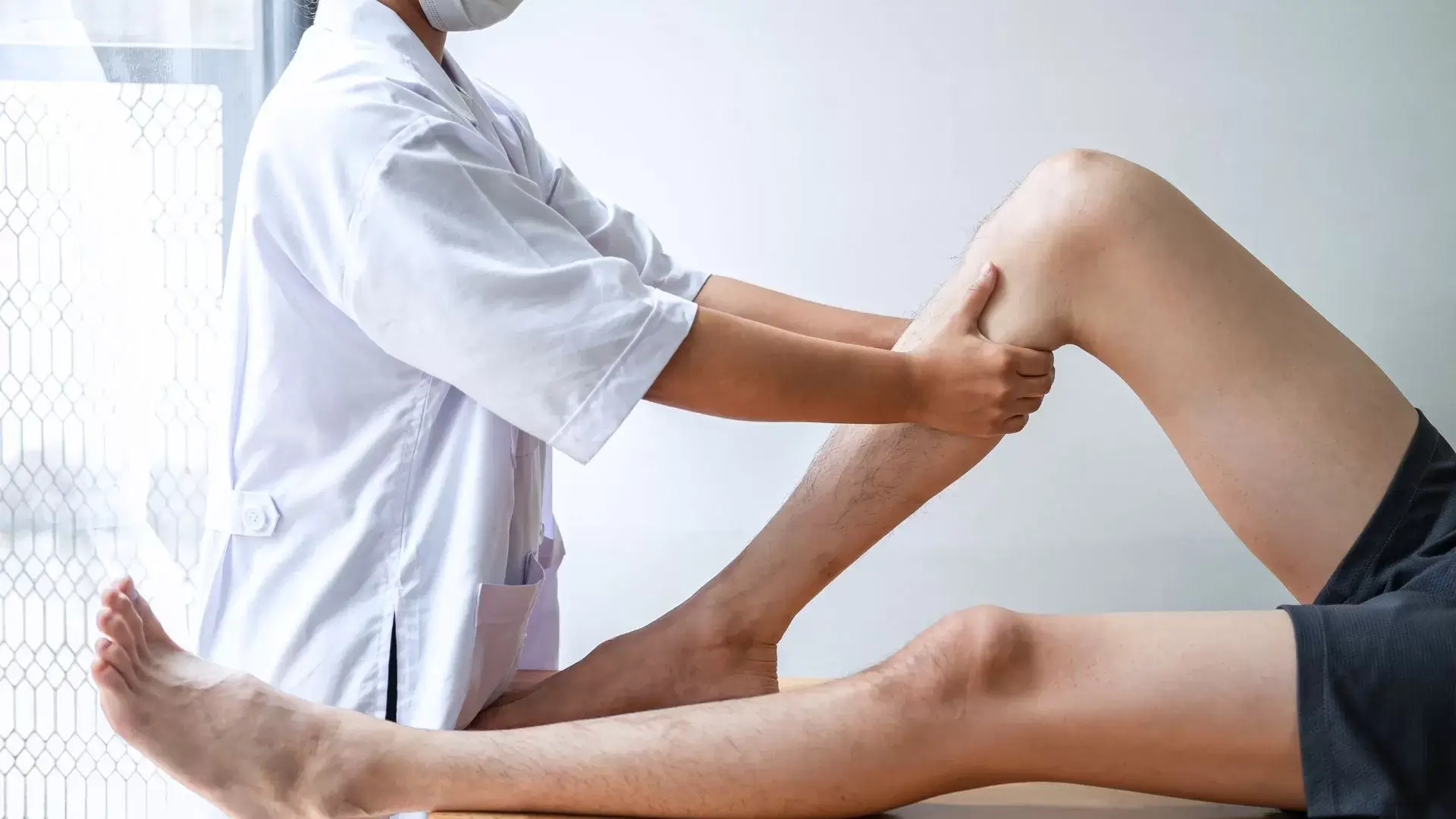We’re passionate about helping runners recover from injuries in Mississauga through specialized physiotherapy. Physiotherapy for Running Injuries targets common issues like runner’s knee, shin splints, and plantar fasciitis. We focus on personalized rehabilitation plans that incorporate exercises, manual therapy, and education on proper running techniques. Our goal is to improve your running biomechanics, enhancing performance while preventing future injuries. Whether you’re experiencing pain or just looking to optimize your running form, we’ve got the expertise to support you. Discover how to take the next step in your recovery with our tailored approach and a supportive community around you.

At Mississauga Physio Chiro Clinic, we specialize in physiotherapy and chiropractic services designed to address running injuries and enhance overall athletic performance. Our approach is thorough, focusing on both recovery and prevention. We acknowledge that running can lead to various injuries, which is why we emphasize injury prevention techniques alongside rehabilitation exercises tailored to each individual’s needs.
Our Top Physiotherapy & Chiropractic Services in Mississauga include strength training for runners, ensuring that you build the necessary muscle support for your joints. We also incorporate flexibility training to improve your range of motion, reducing the risk of injury. Additionally, we offer sports massage therapy, which aids in muscle recovery and relaxation.
To promote healing, we utilize ice therapy and heat therapy, helping to manage pain and inflammation effectively. For runners needing extra support, we provide custom orthotics designed to improve alignment and enhance comfort during runs.
Running injuries are prevalent among athletes, often resulting from a combination of improper training, biomechanical issues, and inadequate recovery practices. Common conditions include runner’s knee, shin splints, plantar fasciitis, and ankle sprains. These injuries frequently stem from training errors, such as increasing mileage too quickly or failing to incorporate rest days, leading to overuse injuries.
Additionally, poor running form can contribute considerably to developing conditions like patellofemoral pain syndrome and various foot pain issues. We recognize that understanding these risk factors is vital for prevention.
To minimize the chances of injury, we should emphasize proper warm-up routines, strength training, and flexibility exercises. Implementing effective recovery strategies, like icing and appropriate stretching, can also aid in maintaining our body’s health. Regularly evaluating our running form and making necessary adjustments can prevent many common injuries.
Physiotherapy plays an important role in effectively managing runner’s knee and patellofemoral pain syndrome, as it focuses on addressing both the symptoms and underlying biomechanical factors contributing to these conditions. When we assess a patient, we often identify muscle imbalances and improper footwear as significant contributors to knee pain. Our goal is to restore ideal running biomechanics through tailored physical therapy interventions.
In the rehabilitation process, we emphasize the importance of both dynamic and static stretching to improve flexibility and strength in the surrounding muscles. Dynamic stretching prepares the body for activity, while static stretching helps maintain flexibility post-exercise. We also incorporate targeted exercises to strengthen the quadriceps, hamstrings, and hip stabilizers, which play a vital role in alleviating symptoms associated with patellofemoral pain syndrome.
Throughout our sessions, we educate patients about the importance of proper running techniques and the potential risks of conditions like iliotibial band syndrome. By addressing these factors, we empower individuals to return to running safely and effectively, minimizing the risk of recurrence. Ultimately, our thorough approach to physiotherapy guarantees a holistic recovery for those suffering from these common running injuries.
Addressing runner’s knee and patellofemoral pain often brings to light the risk of developing iliotibial band syndrome, which can greatly impact a runner’s performance and enjoyment of the sport. Iliotibial band syndrome often manifests as hip pain or pain on the outer knee, primarily due to biomechanical imbalances.
To effectively treat IT band syndrome, we focus on a thorough rehabilitation approach. Foam rolling and myofascial release techniques are essential for alleviating tension in the iliotibial band and surrounding musculature. We also incorporate targeted strengthening exercises to address any muscular weaknesses that may contribute to the condition.
In addition, we utilize compression therapy to reduce inflammation and support recovery. Sports taping or kinesiology taping can offer additional stability and pain relief during physical activity. By aligning our treatment strategies with the individual needs of each runner, we can help restore function and prevent recurrence.
Ultimately, our goal is to empower you with the knowledge and tools necessary for a successful return to running, allowing you to enjoy the sport without the limitations posed by IT band syndrome.

When it comes to managing shin splints and medial tibial stress syndrome, understanding the underlying causes is fundamental for effective recovery strategies. Both conditions often stem from overtraining syndrome, where excessive running leads to muscle soreness, delayed onset muscle soreness, and even tendonitis. We need to recognize that gait abnormalities can exacerbate these issues, so evaluating our running mechanics is essential.
To aid recovery, we should incorporate targeted stretching and strengthening exercises. For instance, focusing on the calf muscles can alleviate foot arch pain and reduce the risk of calf strain. Additionally, applying ice post-activity can help manage inflammation and soothe discomfort.
Rest is another critical component; we must listen to our bodies and allow time for recovery. Cross-training with low-impact activities can also help maintain fitness without aggravating shin splints or medial tibial stress syndrome.
Managing stress fractures in runners requires a thorough understanding of their diagnosis, healing process, and effective prevention strategies to guarantee a safe return to activity. Stress fractures often arise from overuse, improper footwear, or biomechanical issues like pronation problems. During our assessment, we’ll evaluate symptoms, which may include localized pain and tenderness, and rule out other conditions such as hamstring strains or lower back pain.
Once diagnosed, our focus shifts to the healing process. Rest is essential, along with targeted physiotherapy to address any underlying issues like ankle instability or joint pain. We’ll also educate on proper hydration to prevent dehydration, which can exacerbate cartilage damage.
Preventing future stress fractures involves a detailed approach. We’ll work together on strengthening exercises, flexibility training, and improving running mechanics. Additionally, we’ll guide you in selecting appropriate footwear to mitigate risks. By addressing factors like training intensity and surface conditions, we can minimize the chances of recurrence and guarantee you’re running safely and efficiently. With our support, we can foster recovery and enhance performance, allowing you to enjoy running without the fear of injury.
Following our discussion on stress fractures, it’s important to recognize that plantar fasciitis and heel pain are common running injuries that require targeted rehabilitation approaches for effective recovery. To address these conditions, we often implement a combination of stretching and strengthening exercises that specifically focus on the foot and calf muscles, alleviating muscle cramps and reducing the risk of fatigue-related injuries.
Incorporating chiropractic care can also enhance our rehabilitation efforts, as it helps realign the musculoskeletal system, addressing any underlying issues related to repetitive strain injuries. We must also consider running surface impact; choosing softer surfaces can reduce stress on the plantar fascia.
It’s essential to address any potential electrocyte imbalance that may contribute to muscle fatigue. We encourage our patients to engage in cross-training for runners, allowing them to maintain fitness while minimizing further strain on their feet. This may include low-impact activities like swimming or cycling, which provide cardiovascular benefits without exacerbating heel pain.
Achilles tendinitis and tendon rupture can greatly hinder a runner’s performance and overall enjoyment of the sport, making effective physiotherapy essential for a successful recovery. When we experience these injuries, our physiotherapy approach typically focuses on reducing pain and inflammation while restoring function.
Initially, we may employ modalities such as ice therapy and ultrasound to alleviate symptoms. As we progress, targeted strengthening exercises for the calf muscles are vital, as they help stabilize the Achilles tendon and prevent further issues, such as a hamstring tear or hip bursitis.
Incorporating flexibility training is also important, as tightness can exacerbate conditions like sciatica and ligament strain. We must not overlook the impact of proper nutrition and hydration on recovery; an electrolyte imbalance can hinder our healing process.
Additionally, addressing any underlying issues, such as metatarsalgia, can further enhance our rehabilitation journey. Through a detailed physiotherapy regimen tailored to our specific needs, we can effectively navigate our recovery from achilles tendinitis or an achilles tendon rupture, ultimately returning to the sport we love with confidence and strength.

Muscle strains in runners, particularly in the calf, hamstring, and quadriceps, can greatly impact our training and performance, making it essential to address these injuries promptly and effectively. A quadriceps strain can occur during sudden acceleration, while a hamstring strain may happen during sprinting or hill workouts. Calf strains often result from overexertion or inadequate warm-up, leading to discomfort that can hinder our runs.
To effectively manage these strains, we should first acknowledge the signs, including pain, swelling, and limited mobility. It’s crucial to distinguish between different types of injuries, such as an adductor strain or hip flexor strain, which may have overlapping symptoms. Incorporating rest, ice, compression, and elevation can help alleviate symptoms.
Additionally, we should consider the role of delayed onset muscle soreness (DOMS) following intense workouts, which can exacerbate existing strains. Utilizing therapeutic exercises and stretches can enhance recovery and prevent future injuries, ensuring we stay on track with our training goals. Finally, addressing factors like chafing can improve our overall running experience, allowing us to focus on performance without distractions.
Hip pain can considerably impact our running routine, and addressing conditions like bursitis, piriformis syndrome, and flexor strains is essential for maintaining performance and preventing further injury. When we experience hip pain, it often stems from inflammation of the bursae, tightness in the piriformis muscle, or strains in the hip flexors. At our clinic, located at 1834 Lakeshore Rd W unit 6C, Mississauga, ON L5J 1J7, we focus on tailored physiotherapy treatments to alleviate these issues.
For bursitis, we utilize anti-inflammatory techniques and therapeutic exercises to reduce pain and improve mobility. In cases of piriformis syndrome, we emphasize stretching and strengthening the hip muscles to relieve pressure on the sciatic nerve. Flexor strains require a combination of rest, ice therapy, and gradual rehabilitation exercises for effective recovery.
We also recognize that issues like Morton’s neuroma, bunions, hallux valgus, blisters, and black toenails can indirectly affect our hip health. By addressing supination issues and ensuring proper footwear, we can help prevent a cascade of injuries. If you’re struggling with hip pain, contact us to schedule an assessment and start your journey toward pain-free running.
Lower back pain and sciatica are common issues that can hinder our running performance, making it essential to explore effective physiotherapy solutions for relief and recovery. These conditions often arise from poor running mechanics, muscle imbalances, or inadequate core strength. Recognizing these factors allows us to target the underlying issues through tailored physiotherapy interventions.
During our sessions, a physiotherapist will assess our posture, flexibility, and strength. They may employ manual therapy techniques to alleviate pain and improve mobility. Specific exercises focusing on strengthening the core and stabilizing the pelvis are vital. These exercises help in redistributing the load during our runs, preventing further strain on the lower back.
Additionally, incorporating stretches for the hip flexors, hamstrings, and lower back can enhance flexibility and reduce tension. We should also consider implementing proper warm-up and cool-down routines to prepare our bodies for running and facilitate recovery afterward.
As we address lower back pain and sciatica, it’s also important to recognize that many runners experience ankle sprains, instability, and foot pain, which can greatly impact their performance and overall well-being. These conditions often stem from repetitive strain, improper footwear, or sudden changes in activity levels.
In our physiotherapy sessions, we focus on evaluating the extent of the injury and identifying contributing factors. We utilize a combination of manual therapy, strengthening exercises, and balance training to promote healing and restore function. By improving the stability of the ankle and foot, we can help reduce pain and prevent future injuries.
Education is key. We guide runners on proper warm-up techniques, stretching exercises, and the importance of wearing appropriate shoes. We also emphasize the significance of gradual progression in training to avoid overloading the joints.
Regular follow-ups allow us to monitor progress and adjust treatment plans as needed. Ultimately, our goal is to empower runners with the tools and strategies they need to return to their sport safely and confidently. Through dedicated physiotherapy, we can help alleviate ankle sprains, enhance stability, and alleviate foot pain, ensuring a healthier running experience.
Optimizing running biomechanics and gait is essential for preventing injuries and enhancing performance, allowing us to enjoy the sport with greater efficiency and safety. By focusing on our running form, we can identify and correct any mechanical inefficiencies that may lead to overuse injuries.
We often start by analyzing our running patterns through video gait analysis or in-clinic assessments. This enables us to pinpoint areas of concern, such as overstriding or improper foot placement. Once we’ve identified these issues, we can work on strategies to improve our biomechanics.
Incorporating cues such as maintaining a high cadence, proper posture, and a midfoot strike can greatly reduce stress on our joints and tissues. We may also benefit from practicing drills that promote better alignment and balance, which can help us develop a more efficient stride.
Moreover, being mindful of our breathing and relaxation techniques during runs can positively influence our overall biomechanics. As we aim to optimize our running gait, we’re not just preventing injuries; we’re enhancing our performance and making our running experience more enjoyable. Let’s embrace these improvements together, ensuring a healthier, more sustainable running journey.
Building on our understanding of biomechanics, incorporating strength and flexibility training into our routine can greatly reduce the risk of running injuries. By focusing on specific muscle groups, we can enhance their resilience and improve our overall running performance. Strength training, particularly for the core, hips, and legs, helps stabilize our joints and maintain proper alignment during our runs. This stability is essential for preventing common injuries such as shin splints and runner’s knee.
In addition to strength training, flexibility exercises play an important role in our injury prevention strategy. Regular stretching helps maintain the elasticity of our muscles and tendons, allowing for a greater range of motion. This flexibility can lead to improved stride length and reduced muscle tension, further lowering the risk of injury.
We should aim to integrate strength and flexibility training into our weekly schedules, dedicating time to both aspects. Whether it’s through targeted exercises, yoga, or dynamic stretching routines, these practices will not only protect us from injuries but also enhance our overall running experience. By prioritizing strength and flexibility, we’re investing in our long-term health and performance as runners.
Incorporating sports taping, orthotics, and compression therapy into our routine can greatly enhance our running performance and provide essential support for injury prevention. Sports taping, for instance, helps stabilize our joints and muscles, reducing the risk of strains and sprains while allowing us to maintain ideal movement patterns. By applying tape strategically, we can alleviate pressure on specific areas, promoting better biomechanics during our runs.
Orthotics play an important role as well. Custom-fitted insoles can correct our foot position, improve alignment, and enhance our overall efficiency. With the right orthotics, we can minimize excessive pronation or supination, which often leads to injuries over time.
Compression therapy is another valuable tool in our arsenal. Wearing compression garments helps improve blood circulation, reducing muscle soreness and fatigue. This increased blood flow can aid in recovery, allowing us to bounce back quicker after intense training sessions or races.
Regularly booking an appointment for professional physiotherapy can greatly aid in the recovery and prevention of running injuries in Mississauga. By seeking expert help, we’re not only addressing current injuries but also gaining valuable insights into our running mechanics. This proactive approach allows us to identify potential issues before they escalate.
During our sessions, trained physiotherapists will conduct thorough assessments to understand our unique needs. They’ll create personalized rehabilitation programs tailored to our specific injuries and goals. This might include targeted exercises, manual therapy, and education on proper running techniques, all of which can enhance our performance and reduce the risk of future injuries.
We should also take advantage of the opportunity to discuss our running habits and any discomfort we might be experiencing. Our physiotherapist can provide guidance on suitable footwear, training plans, and recovery strategies that align with our lifestyle.
In Mississauga, many clinics offer convenient appointment scheduling and flexible hours, making it easier for us to prioritize our health. By committing to regular physiotherapy sessions, we’re investing in our running journey, ensuring we stay active and injury-free for years to come.
Nestled in the heart of the Greater Toronto Area, Mississauga boasts a vibrant community with diverse recreational opportunities, making it an ideal place for runners and outdoor enthusiasts alike. With over 480 parks and numerous trails, we find ourselves surrounded by scenic routes perfect for jogging or running. The city’s commitment to maintaining these spaces encourages both casual and competitive runners to stay active and healthy.
In addition to its beautiful landscapes, Mississauga hosts various running events throughout the year, fostering a sense of community among participants. These events not only promote physical fitness but also create opportunities for social interaction and support, which can be vital for those recovering from injuries.
As we engage in our running pursuits, it’s important to recognize the significance of proper physiotherapy. Access to skilled physiotherapists in Mississauga guarantees we receive the guidance needed to prevent and treat running injuries effectively. By prioritizing our health and well-being, we can continue to enjoy all that this vibrant city has to offer while staying active and fit. Together, let’s embrace the running culture in Mississauga and support each other on our wellness journeys.

When we attend a physiotherapy appointment for running injuries, it’s important to wear comfortable, breathable clothing that allows for easy movement. We should opt for athletic wear, like shorts or leggings, and a fitted top. Footwear is essential too; supportive sneakers are ideal as they help our therapist assess our gait. Avoiding restrictive clothing guarantees we can fully participate in our assessment and treatment, enhancing our overall recovery experience.
Typically, each physiotherapy session lasts about 30 to 60 minutes, depending on our individual needs and treatment goals. We can expect our sessions to include a combination of assessment, hands-on therapy, and exercises tailored to our condition. It’s important to remember that the duration may vary based on the complexity of our injury and the specific techniques our physiotherapist employs. Regular attendance and commitment to our treatment plan can enhance our recovery process.
When we’re undergoing physiotherapy treatment, it is crucial to assess our individual circumstances. While some of us might be able to continue running with modifications, others may need to take a break to allow for proper healing. Our physiotherapist will provide guidance based on our specific injury and progress. Ultimately, communication with our therapist is key to ensuring we balance our recovery while maintaining our running routine safely.
When it comes to insurance coverage for physiotherapy, it largely depends on our specific policy. Most health insurance plans do cover physiotherapy, but we should check the details, including any limits or requirements for referrals. It’s crucial to contact our insurance provider directly to confirm what’s included. Understanding our benefits will help us make informed decisions about our treatment options and guarantee we receive the care we need without unexpected costs.
When it comes to attending physiotherapy sessions for ideal recovery, we typically recommend starting with two to three sessions per week. This frequency allows us to monitor progress closely and adjust treatment as needed. As we start to see improvement, we can gradually reduce the frequency to once a week or biweekly. It’s important to listen to our bodies and communicate any concerns to guarantee we’re on the right path to recovery.
Reach out to us today to book an appointment or learn more about our services. Our friendly team is here to answer your questions and help you take the first step toward improved health and wellness.
(647) 372-1209

At our “Mississauga Physio Chiro Clinic”, we are dedicated to providing personalized care that addresses the root cause of your discomfort. With a team of experienced physiotherapists and chiropractors, we focus on restoring your mobility, relieving pain, and enhancing your overall well-being.